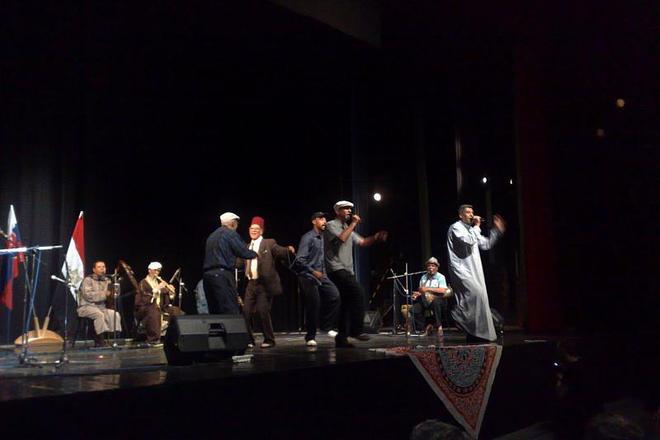THE FAMOUS El Tanbura group from the Egyptian port city of Port Said performed in the culture house Zrkadlový Háj in Bratislava on May 21. Their performance was the result of a joint effort by the Egyptian Embassy and its ambassador to Slovakia, Hassan El-Laithy, the Slovak culture ministry and the Mind the Gap organisation which seeks to bridge cultural differences between Europe and the Orient. Although this kind of music is quite strange to a European ear – it is not even similar to Oriental pop music – the vitality and joy of life evidenced by the performers took the audience by storm, with wild applause, rhythmical movements and, in the end, a complete standing ovation. So it seems that any cultural gap was easily forgotten for at least this one evening.
Marek Brieška of Mind the Gap likened El Tanbura to the Cuban Latino-jazz group, the Buena Vista Social Club, made famous thanks to a film by Wim Wenders. El Tanbura consists of men from various professions who turn to music in the evenings after their work is done. Their key instrument is the simsimiyya, an ancient lyre dating back to the times of the Pharaohs, revered both for its mesmerising properties and occult origins in ancient healing rituals.
The group was formed by band member Ibrahim Zakaria in 1989 after he witnessed a revival of the simsimiyya and the music inspired by it as a young boy in the 1950s. But by the 1980s, Egypt’s traditional folk culture had been pushed aside by cheaper instruments and electronic sound systems and what remained of folk music had been co-opted by government sponsorship. Zakaria and El Tanbura were determined to make their traditional music live – both on its own terms and on its own streets.



 Egypt's El Tanbura in Bratislava. (source: Courtesy of Mind the Gap)
Egypt's El Tanbura in Bratislava. (source: Courtesy of Mind the Gap)